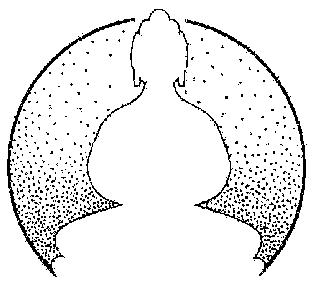 Email
Jhampa
Email
Jhampa
Home Page
Dharma Talks
New Material
Annual India Tours
Jhampa's Short
Bio
Qualification
& Teachings
Long Bio
Dharma Center
Retreat Center
Buddhist Links
Yamantaka
Site
Yogini Site
Astrology Site
Brail Prayers
Site
| | Buddhist Astrology
Site
These lectures were transcribed by T Vd Broek. Heartfelt
gratitude is offered for all the hours of work spent on this Dharma activity.
These talks are offered free of charge. They have been slightly edited.
Duncan Sept 29 1991
We have been going through a series of teachings dealing with our suffering and becoming more cognisant of our sufferings. Within this are two principal levels of realizations we should try to generate within ourself. One, we should try to generate a sense of disgust or to be disheartened with delusion. This means if we recognize our suffering in it 's manifestations such as when we want something and don't get it. Then we suffer! When we don't want to meet with bad circumstances and yet we do! Then we suffer! When things go well for us and then fall apart, we suffer. Those sorts of things are all sufferings as in the mind goes up and down all the time and such.
The basic teaching on the fundamental issue or presentation in recognizing one's own suffering is finally becoming disheartened with it. Becoming disheartened with the perspective of ego cherishing. And in becoming disheartened with that, then wishing to cease being involved in it. This is the hinayana which is desire to release oneself from the three principal delusions, ignorance, and anger and attachment. If one becomes more recognized, the mind goes up and down like a yoyo, the mind is unhappy, the mind is suffering, then one starts to ask why do I go through this time and time again? With that recognition one looks back to one's basic perspective and starts to recognize that one's own attitude is causing most of the problems. With that one tries to take the fuel or foundation out of that perspective and swing one's mind over to a more positive vision. That is the fundamental realization for why one reflects on suffering.
The more evolved recognition of that, is to be able to recognize the suffering of others. Within that, one generates compassion. Very real compassion is generated the more one realizes one's own delusions, one's own ego perspective, attachments, aversions, one's own ignorance of mind. Make oneself miserable, and when one sees another who is unhappy, one has real compassion because one sees the cause of it, one sees sits manifestations, sees the unhappiness in others, and one can feel true compassion and love, empathy for another. And if one has capacity, one can try to do something about it for the other person. If one does not have skill and means to help another, at least one has a positive vision. One where there is a sense of relationship, a sense of compassion and caring. And those qualities, although one is not very effective about being able to do much about it, it is developing positive quality and with a little bit of time, most people can then actually accomplish something in helping others. It just takes a little stability within ones own personality.
That is the teachings on suffering and why they are presented on two levels of practice. They are both very connected, the more one sees ones own personal suffering, the more one has an opportunity to recognize others suffering.
If we were to take that and move back to making it more real, it comes back to motivation and where we are coming from. With the work put in to the performing monks, I would like that some time and energy put into dedication and happiness towards all of what has been done. That now that it is finished, that there is that rejoicing, that is capping something which has been very positive. Alright?
Motivation is the most important thing. And we all are involved in one way or another of the monk's coming, and so we all had our various motivations. We all accomplished a certain amount of activity involved in that, and now it is over. It is important to dedicate, and that means to re-validate one's motivation. In recognizing that, feeling good about it. To stabilize and put a good imprint for all the positive activities we nave accomplished.
So for the meditation this evening, the principal thing we should have in our mind is a good understanding of bodhicitta, and secondly, we should have that integrated with the correct view of reality. And with those two, if you understand those, you should be able to enter into quite a profound state of meditation. By that I mean a meditation where one has a very clear centering upon ones own being, and is recognizing the energy flowing out is a manifestation of love and compassion, bodhicitta. And with that, then one can also feel very positive and dedicate the positive activities accomplished, and in that way confirm it, give it positive imprint to one's mind for all the good things. And that is the meditation for this evening,m which is mostly a dedication.
Meditation:
Copyright 1994 Daka's Buddhist Consulting
All Rights Reserved
|

